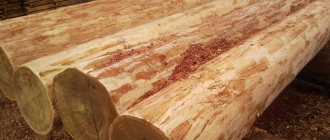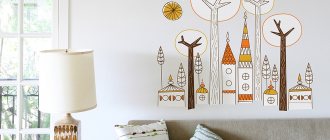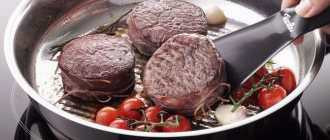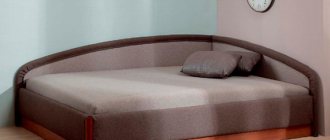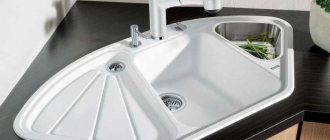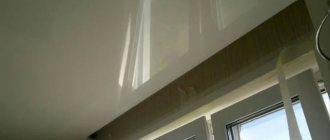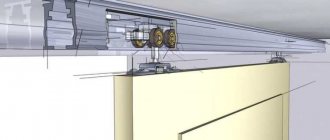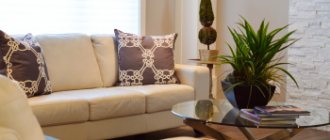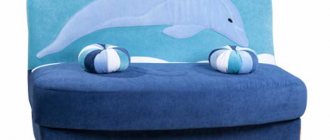27120
Every owner dreams of a cozy room design, but wooden furniture is expensive and difficult to care for. Sets of boards are not always paintable. Furniture facades made of MDF come to the aid of lovers of unusual interiors. This is a great way to display interesting pieces of furniture in your kitchen or room. Manufacturers offer owners to purchase products of different colors and shapes, thanks to which anyone can create the ideal environment at home.
Advantages and disadvantages
There is nothing ideal in this world, and MDF furniture facades are no exception. They have their positive and negative sides, which you need to familiarize yourself with before purchasing furniture. First of all, every owner looks at the advantages of the material; they must be presented by the manufacturer, so finding out the required information is not difficult:
- The material does not emit odors and can be placed in any room;
- Furniture made from MDF panels is not afraid of fungi, microorganisms and other biological threats;
- Low material cost;
- Unlike natural wood, MDF is able to withstand temperature changes and high humidity. The material will not crack or collapse for a long time;
- Ease of production of bent-shaped elements.
The material has much fewer disadvantages, but they are still present. When ordering furniture, you should remember that the material is less durable than solid wood, and the coating, even high-quality, can peel off at the corners over time.
Wooden furniture looks expensive and may indicate the well-being of the home owners, but it is not advisable to place wood products in the kitchen. In a humid environment with a constant temperature difference, the elements will quickly become unusable.
MDF panels are excellent for use in rooms with unfavorable environments. Furniture made from MDF can be located in any part of the apartment; it is a universal material that looks good in all rooms. Thanks to high-quality coatings, the surface easily imitates natural wood.
Disadvantages of MDF panels
The main weakness of the plates is their sensitivity to high temperatures. With constant overheating, the decorative coating cracks or peels off, and the surface becomes deformed. Be sure to take this into account if you use MDF when decorating your kitchen.
The pressed material does not withstand shock loads well, because falling heavy objects or strong impacts can leave dents on the base. Therefore, MDF boards are not suitable for finishing floors and require additional protection when making kitchen countertops.
Varieties
Each MDF panel is made from wood chips. Sawdust is connected to each other by lignin - this is a substance released by wood when it is heated to high temperatures. The production of the product does not involve phenol-formaldehyde resins, which are harmful to humans. Factories produce panels of various sizes and shapes; they may differ in thickness or the presence of decorative elements, but the division into types occurs depending on the coating:
- Laminated MDF is boards covered with polyvinyl chloride (PVC) film. The materials produced can come in a variety of shades. Of all types of coating, PVC is the most resistant to mechanical damage and is not afraid of accidental scratches, impacts and chips;
- High-gloss film - the choice of colors for this coating is limited, but it includes a sufficient number of shades to decorate the room. When applied, the coating envelops the front side of the slab and its edges. The film turns out perfectly smooth, without seams. The glossy material is very durable, but due to its high reflectivity, fingerprints and minor defects are clearly visible on the surface;
- High-gloss enamel implies the largest selection of coating shades. The furniture facade is painted in several stages. First, the surface is covered with a thin layer of primer, after which the MDF furniture facades are painted by hand;
- Natural veneer - MDF facades are very similar to natural wood, they can be used when designing furniture in a classic style;
- Bent elements are made to order according to individual sizes.
The color range allows us to make absolutely any furniture; parts are made to order, which allows the owner to easily create a unique interior at home.
Laminated
High gloss film
High gloss enamel
Natural veneer
Bent
Comparison with other materials
Chipboard/chipboard
Chipboard is also made from wood chips. To glue it and give it the desired shape, resins are used, which do not always meet environmental requirements, so such furniture is undesirable for use in the kitchen, although it is very popular.
Due to such differences in the production process, chipboards are not as dense: a maximum of 650 kg/m3, which means they are more susceptible to the effects of water and steam, and are not so durable in general.
For example, when wet, a chipboard board actively absorbs moisture and can increase in volume by about 30%.
In this case, we can distinguish laminated chipboard - that is, ordinary chipboard, which is covered with a film on top, or laminated. This material is not afraid of moisture due to the protective top layer, so it is often used to create budget countertops.
But you should understand that if the top layer deteriorates or is damaged, the chipboard will immediately reveal all its shortcomings.
MDF has the following advantages over chipboard:
- with equal thickness, MDF will be twice as strong;
- the ability to form reliefs of any complexity;
- easier to process;
- smoother surface;
- more environmentally friendly;
- not demanding on operating temperature.
But most kitchen furniture, including facades and countertops, are now made of chipboard.
Such a set will not last long - about 10-15 years. But thanks to the low cost, this can be even more profitable than one set from an array for 40 years.
If environmental friendliness is important, then it is better to choose MDF panels.
Natural wood
Even over natural wood, MDF has advantages:
- equal density over the entire surface of the slab;
- absence of natural defects - for example, knots, voids, etc.;
- possibility of embossing and other special processing;
- resistance to microorganisms and fungi;
- the cost is 60–70% lower.
Solid wood furniture belongs to the expensive and elite category. Russian oak is valued more than others - it is also used for veneer.
The most budget option is birch or pine. Such a set will last 40 years or even more - the main thing is that you don’t get tired of it.
But no matter how beautiful and prestigious such furniture may look, it is very sensitive to temperature changes and is also difficult to maintain. For these reasons, the array is now being replaced with veneered MDF.
Plywood
MDF also has advantages over plywood:
- absence of external and internal defects such as knots and holes from them, veneer overlaps, cracks, and so on;
- perfectly flat and smooth surface;
- no deviations in the width or length of the sheet;
- not afraid of exposure to steam;
- more favorable price.
But at the same time, plywood is more durable.
This is due to the manufacturing process: solid wood is used for plywood, and only its fibers are used for MDF. It is not customary to use plywood for kitchen furniture or even backsplashes.
Fiberboard
Fiberboard is a material also made from wood chips. The difference from MDF is the use of synthetic resins to strengthen the wood board.
The plate is made by wet pressing, so its back is not smooth, but resembles a mesh from a brand on cottage cheese. This is not the best option for the kitchen, as dust may accumulate.
To better imagine this material, you need to remember the back wall of some cabinet - that rough material is fiberboard, or, as it is sometimes called, hardboard.
Fiberboard is not afraid of moisture and temperature changes, but at the same time it is also low in cost. But the manufacturing process itself does not allow making hardboard thick, so it cannot be used as a facade or countertop in the kitchen. The maximum is the back wall of the kitchen unit.
What inserts can be made?
It is very uncomfortable to be in a room with furniture whose facades are painted the same color. It “puts pressure” on people and seems very large. To avoid this, use a variety of inserts. In this case, the facades are made from an MDF profile located along the perimeter of the future element. The required element is inserted into the profile groove. The standard groove size is 8 mm. If, according to the designer’s idea, it is necessary to use a smaller insert, then a special seal is used to help tightly fix all parts of the structure. There are several types of inserts that allow you to create original facades for furniture:
- MDF inserts - the inner part, enclosed in profiles, completely replicates their color and texture. The element is used together with other inserts and allows the closed part not to stand out from the overall design;
- Glass can be placed in framed facades. The furniture set will become much more interesting. Depending on the wishes of the owners, they select film, transparent or patterned glass. The fragile part is secured with a silicone sealant. Thus, showcases of any size and shape are created;
- Fans of bright colors can choose frame facades with MDF inserts, with bright coatings: matte, glossy, metallized, structural. The choice of coating options in this case is limited only by the designer’s imagination;
- Inserts made from unusual materials for cabinet furniture: tapestry or leather look original. They are both incredibly durable and will not lose their original appearance for a long time. Each product wears out the most on the edges, and in this case they are covered with an MDF frame and the service life of the textile material is very high.
Genuine Leather
Bright panels
Glass
Forms and methods of material processing
What is MDF in furniture? The meaning of this designation is a fine fraction obtained from small waste from the wood processing industry. The production procedure involves the formation of a special mass from shavings and glue. Slabs of different thicknesses, areas and shapes are formed from it. If necessary, the desired relief can be made, which is especially important for creating unique furniture equipped with curved and exquisite facades.
This material is used to make panels, tabletops, baseboards, trims or other products necessary not only for creating furniture, but also for finishing the room. MDF furniture profiles, which complete any decoration, are considered especially in demand.
MDF panels for furniture have a fine-fiber structure, so when processing or milling them, a lot of dust is generated. Due to the ease of cutting, you can create unique carved designs yourself. The ease of processing allows the panels to be used to create cabinet, built-in or modular furniture. When using CNC machines, you can even make curly images.
To improve the appearance and quality of furniture, various processing or decoration methods are used.
| Processing method | Its features |
| Lamination | The outside of the panel is covered with a special PVC film, which is glued under high pressure. This treatment results in a matte or glossy surface. It can imitate various expensive materials, and can also be made in a variety of shades. The resulting coating is durable, resistant to sunlight and chemicals, highly hygienic and easy to maintain. |
| Veneering | The veneer can be glued to one or both sides of the board. To create it, valuable types of wood are used, so the result is outwardly expensive furniture. When using veneer, the price of structures increases significantly. This treatment ensures the production of moisture-resistant panels that are resistant to temperature warping and drying out. |
| For painting | Such panels are solidly pressed and have an unpainted surface. In this case, buyers can decide for themselves which color and quality of paint suits them best. Painting is done manually or using a special tool. |
There are many decors for such panels, which are chosen by the users themselves.
Laminated
Veneered
For painting
The main types of MDF products include:
- Decorative panels for walls are equipped with grooves and ridges that simplify installation. They are used to form wall coverings in different rooms. To fix the elements, you can use glue or create a frame. They are easy to install, have a beautiful view, good thermal insulation and sound insulation. But such decorative elements are easily destroyed by mechanical stress, easily ignite and have a high price;
- Moisture-resistant panels are considered universal products that are highly resistant to moisture. They are considered ideal for the bathroom or kitchen. At the same time, they are easy to process, durable and have good sound insulation parameters;
- Glossy panels - these MDF furniture panels are most often used to create kitchen sets, cabinets or hallways. Due to the glossy coating, they have a sophisticated appearance and also fit well into different interior styles. Additionally, this coating is well protected from various mechanical influences. Long service life guaranteed. Polyester or primer can be used to create the coating;
- Flexible panels appeared on the market relatively recently, but quickly became popular. They can take any shape, so they are effectively used to create curved facades, arches and other structures. Flexible elements have smooth surfaces that can be painted or decorated in a variety of ways. This painted curved façade can enhance the appearance of any room.
The thickness of MDF can vary from 4 to 16 mm. The lower this indicator, the easier the slabs will be to process. But thin elements are quite fragile.
Flexible
For walls
Moisture resistant
Glossy
Quality and selection criteria
The first step in choosing MDF panels is to determine the required dimensions. Sometimes you can immediately select elements from the parts presented in the store, but more often than not, each part of a furniture set is ordered separately at the factory. Fiberboards are manufactured in accordance with GOST 20400-80. The document allows for minor deviations:
- Under the film there may be almost invisible marks up to 8 mm long;
- Metallic film may contain microspots and small streaks. This is due to its properties;
- The texture direction may be skewed by up to 5 mm;
- The texture of the wood board is allowed to appear under the film;
- Small chips may be located on the surface, repaired with a material of a suitable color;
- The presence of technological holes on the reverse side is allowed. Their size cannot exceed 6 mm, and should be no more than 3 by 0.3 square meters.
List of unacceptable defects:
- Any film wrinkles;
- The presence of foreign particles underneath;
- Bubbles;
- Scratches. Their length cannot exceed 50 mm;
- Dents;
- Milling defects (chips, ribbing, waves on the edge);
- Any peeling of the coating or backing;
- Not completely cut off foam;
- Sliding of the coating;
- Grinding defects: rubbed parts, scratches;
- Folds at the corners of complexly designed products;
- Differences in shades on different parts of the furniture;
- Glue residues located anywhere on the part;
- Whitening film on corners and edges.
To select the ideal panels, you need to view each copy before purchasing and, if necessary, order a reissue.
How to choose?
The choice of MDF panel should be based on where it will be used - hence the focus on different characteristics.
For example, painted panels are quite suitable for the kitchen, since they have increased resistance to moisture and steam.
But this will still not be enough for the bathroom - only laminated materials (LMDF) are suitable here.
If any additional finishing work is planned on the furniture facade, then it is best to select veneered MDF. If it is necessary to decorate large spaces, ordinary tiled MDF will do.
It is important to pay attention to the manufacturer.
Of course, as you can see above, the choice of domestic brands is wide, but foreign materials, for example, from Poland, Sweden and Germany, have the best reputation. But copies from China cannot boast of quality - they charge a price.
In any case, before purchasing, it is necessary to conduct a thorough inspection of the selected material for the kitchen:
- check the surface for smoothness and absence of chips;
- there should be no smell;
- the color should be uniform.
Such a thorough check is due to the fact that some unscrupulous manufacturers, under the guise of MDF, sell laminated chipboard panels, which are inferior in quality and strength.
Rules of care
After purchasing and installing, furniture sets look great, but to maintain their original appearance for a long time, you need to properly care for them:
- MDF panels do not tolerate temperatures below +10 and above +40 degrees;
- Constant strong changes in humidity can have a bad effect on the strength characteristics of furniture;
- The paint or film covering the slabs must be washed regularly. To do this, use a weak soap solution and non-aggressive cleaning agents. But during cleaning, you cannot use a large amount of water;
- In addition, there are specialized products that are designed specifically for MDF. They are usually available in spray form. Spray the composition onto the contaminated surface. Take a soft, lint-free cloth and wipe the surface dry. Repeat if necessary.
Following advice on choosing quality furniture and subsequent proper care will help extend the life of the products.
Installation and use of MDF panels
MDF panels and lining are often used for cladding walls and ceilings, but you need to choose the right installation method. The most universal solution is a wooden or metal sheathing, which will also hide all defects in the foundation and communications. This option is suitable for walls made of any material - just choose the right fasteners.
Tongue-and-groove panels and panels with a flat end can be laid exactly end-to-end. If you want to cover the entire wall with slabs, this is the option for you. But more often MDF is combined with other finishing materials, and the ends are covered with decorative thresholds and baseboards.
MDF panels with high-quality coating do not require difficult maintenance, do not fade or deform. Remove any dirt with a regular damp cloth without chemicals. The main thing is not to use abrasive materials, not to abuse the amount of water and not to use too aggressive household chemicals.
